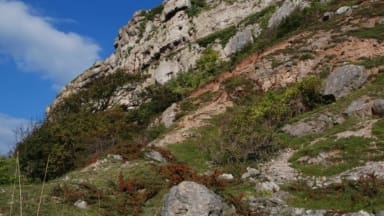
Listed as an invasive species in the UK Wildlife & Countryside Act, Cotoneaster horizontalis is an invasive non-native species, taking over valuable habitats including limestone grasslands.
Cotoneaster horizontalis is a deciduous shrub with small, simple, waxy leaves with clusters of small white or pink flowers in late spring/early summer, followed red berries. Species identification can difficult as they look very similar to each other, such as for example hollyberry cotoneaster and the small leaved cotoneaster.
Gardeners in North Wales are being asked by the NWWT to help stop the spread of the invasive cotoneaster that is damaging the countryside. The focus the NWWT campaign is on areas with limestone grasslands, but gardeners across North Wales can get a reward for removing their cotoneaster. The NWWT particularly wants people in Llandudno and Penrhyn Bay in Conwy, and Halkyn in Flintshire, to join the removal campaign.
According to the NWWT, “Sadly, 90% of Wales’ semi-natural grasslands have declined since the 20th century. Remaining areas are now often small in size and highly fragmented, having devastating effects on local wildlife. The invasion of cotoneaster has contributed to this loss of habitat it’s now recognised as one of the top 10 species to negatively impact protected sites in Wales”.
Cotoneaster was introduced to the UK in 1879 from Eastern Asia as an ornamental plant. Cotoneaster berries are easily dispersed by birds contributing to its widespread distribution. The Wildlife Trusts is committed to the removal of this invasive plant in order to allow native wildlife to thrive. Listed on Schedule 9 of the UK Wildlife & Countryside, gardeners are encouraged to think carefully about its potential impact on wildlife and to seriously consider alternatives. It is against the law to plant cotoneaster in the wild.

